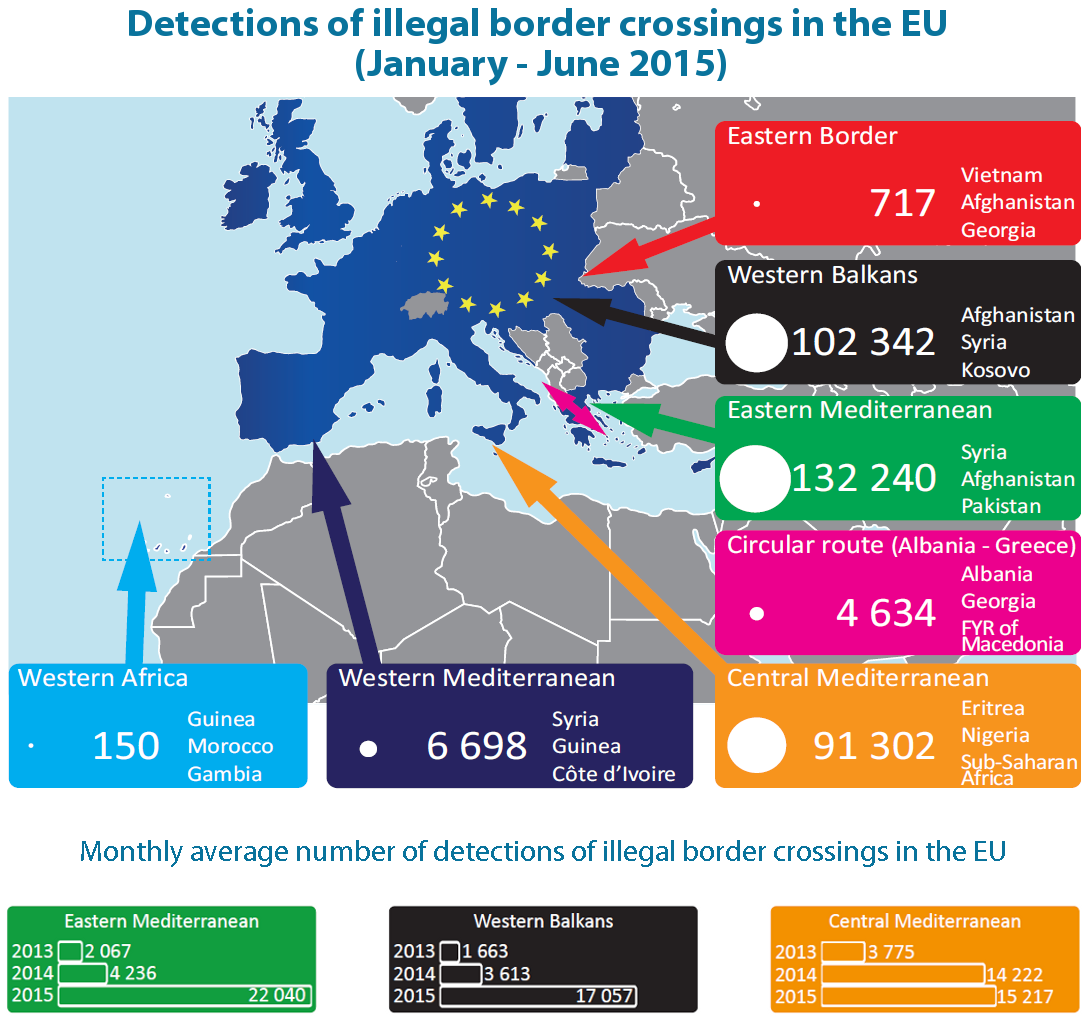Written by Piotr Bąkowski

The European Union currently faces a massive surge in migration resulting from mixed flows of asylum-seekers and other migrants. As presented in our latest infographic on Recent migration flows to the EU, there has been a sharp rise in the number of illegal crossings of the EU’s external borders. Two previous EPRS publications on Irregular immigration in the EU: Facts and Figures and Asylum in the EU: Facts and Figures also report on the increasing number of third-country nationals illegally crossing EU borders and seeking asylum in EU Member States. With hundreds of thousands of people embarking on perilous journeys, the number of deaths in the Mediterranean Sea has grown exponentially, as evidenced by the International Organization for Migration, which quotes the figure of over 2 700 victims in 2015 so far, as compared to 3 200 people in 2014.
To respond to the ongoing crisis in the Mediterranean, the European Commission presented a proposal for a comprehensive European Agenda on Migration in May 2015, setting out immediate EU action and measures for managing migration in the coming years (described in our briefing on First measures of the European Agenda on Migration). Debate at EU level over provisional measures for relocating asylum seekers arriving in Italy and Greece, however, has been particularly problematic. Other possible EU responses to the current migratory challenge are covered in a recently published EPRS briefing on the EU migratory challenge, with some proposed solutions being based on legislation already in force and others requiring a profound reform of the existing system. Among the main issues debated is the lack of genuine burden-sharing in particular with reference to the ‘Dublin system’, which regulates, in the absence of an EU-wide asylum status, the Member States’ responsibilities for the examination of asylum applications, as well as with regard to the lack of a permanent intra-EU relocation scheme for refugees.
A general overview of the existing EU legal instruments in the field of asylum and irregular immigration can be found in our briefing on the EU legal framework on asylum and irregular immigration ‘on arrival’: State of play. So far, as regards irregular migration, instruments at EU level focus mainly on security concerns. The European Parliament and many others have therefore increasingly called for a more holistic approach, including channels for legal migration and integration policies (covered in our briefing on Third-country migration and European labour markets: Integrating foreigners).








Reblogged this on Oxtapus *blueAction.